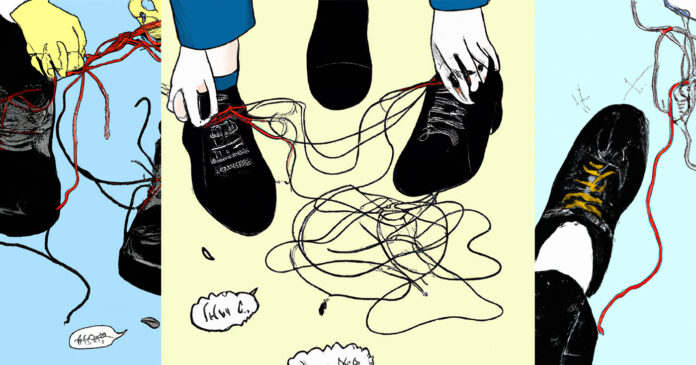Algiers, Algeria — One does not tie their shoes because it brings them joy. One ties their shoes because not doing so results in tripping, social judgment, or death by escalator. Thus, the act itself becomes a kind of existential contract: you perform a meaningless task because the alternative is worse. Welcome to life.
Begin by grasping your laces. This is your first mistake. These limp, cotton tentacles dangle like the frayed remnants of forgotten dreams, yet we must tame them. You cross them—an act of symmetry, yes, but also futility. A moment of order imposed upon chaos. The knot you tie is not a solution; it is merely a postponement. It is the illusion of control in a universe that does not recognize your ankles.
Now, you have a choice. One knot or two? The single knot is a brave lie—it says, “I am fine with impermanence. Let the laces come undone. Let the world unravel.” But we know better. We double knot. We always double knot. We crave the illusion of security even as we march toward entropy. The double knot is not for function. It is a ritual. A talisman. A laughable defense against the abyss.
To tie one’s shoes is to participate in the farce of daily maintenance. It is Sisyphus with laces. You bend down, tie the bow, rise again, and soon enough, you’re down there once more—adjusting, tightening, muttering. Your spine protests, your knees remind you of time’s passage, but still, you kneel before the altar of shoe maintenance because society frowns on flapping soles.
Some will say this is an act of self-care. These people are dangerous. They believe in progress. They believe in arch support and ergonomic insoles. Do not trust them.
And what of Velcro? What of slip-ons? These are not liberations but concessions. They are the footwear of the defeated—those who have looked into the void of laces and said, “No thank you.” But rebellion is no less absurd than submission. One must imagine the loafer happy.
Which brings us, inevitably, to Crocs—those plastic clogs of existential surrender. Foam-born abominations molded in the shape of indifference. They ask nothing of you. They tie nothing. They breathe through little holes, as if to mock the very notion of durability. To wear Crocs is to announce, “I have opted out of the struggle. I no longer believe in effort.” And in this, perhaps, there is honesty. A brutal sort of authenticity. But beware: the road from Crocs to nihilism is shorter than it appears. Many have slipped, both figuratively and literally.
So tie your shoes, dear reader. Tie them with the resignation of one who knows that even the best knots loosen, that even the firmest soles wear thin. Tie them knowing that you will do it again tomorrow. And the day after. Until you don’t.
In this, as in all things, we tie our shoes not because it matters, but because we are still here. And for now, that is enough.

